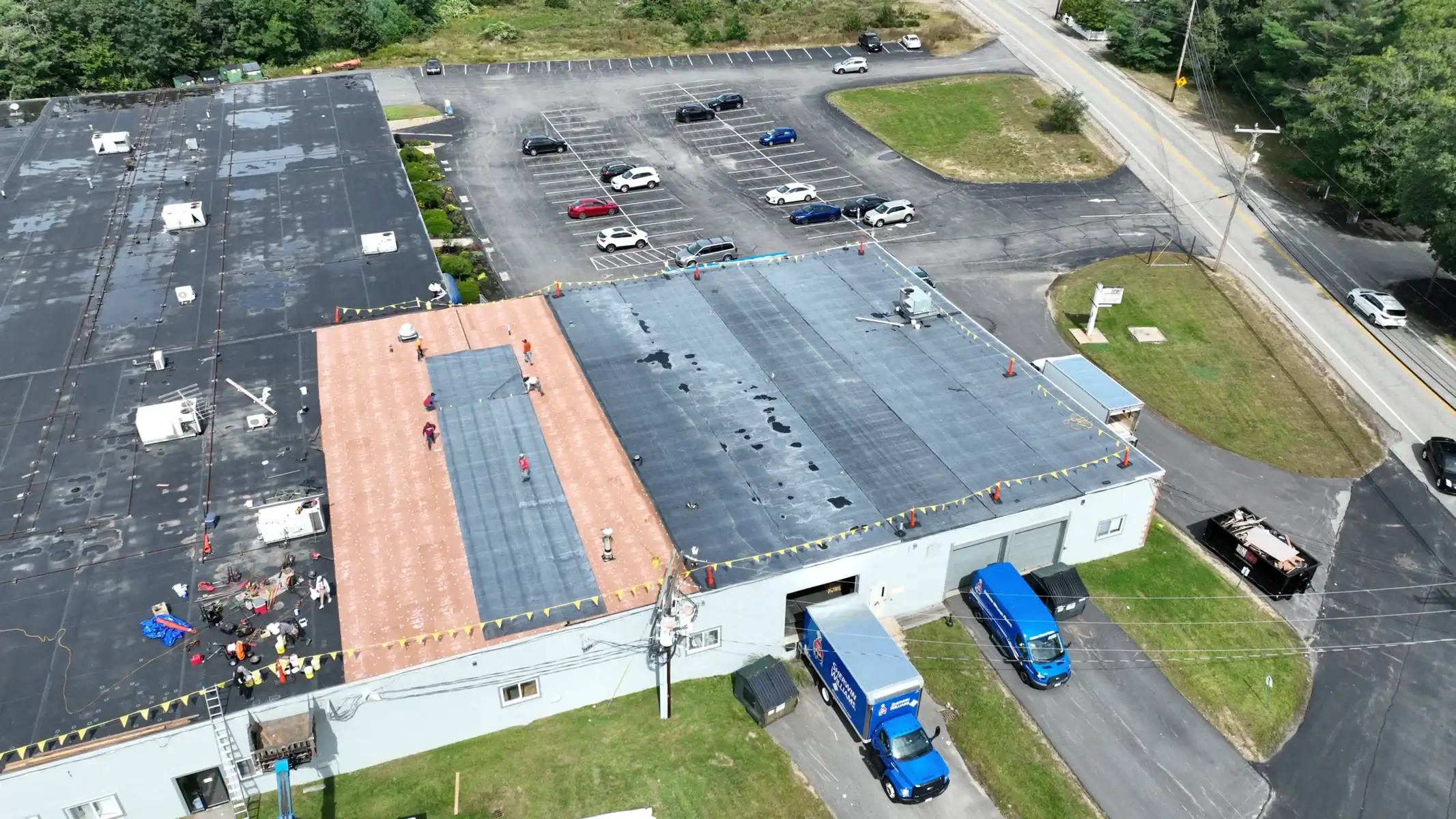
Flat roofs require durable, waterproof, and reliable materials to ensure long-lasting protection and minimal maintenance. Rubber roofing, particularly the industry-leading Certified Carlisle membrane, is a popular choice for homeowners seeking an effective and eco-friendly solution for their flat or low-slope roofs. As the leading and most trusted residential roofing contractor in New Hampshire and Southern Maine, J. Carnes & Son Roofing specializes in the installation, repair, and maintenance of Certified Carlisle rubber roof systems. In this blog post, we will discuss the advantages of rubber roofing, explore its various types and material options, and provide valuable tips for choosing a reputable roofing contractor and ensuring a successful installation.
Certified Carlisle roofing systems consist of high-quality rubber materials that are proven for superior durability, energy efficiency, and protection against the elements. J. Carnes & Son Roofing is committed to helping homeowners make informed decisions in selecting the ideal rubber roofing solution for their specific needs. In the following sections, we will delve into the specific benefits of rubber roofing, outline essential factors to consider when choosing a Certified Carlisle roofing system and share expert advice on partnering with a skilled contractor and maximizing the longevity and performance of your rubber roof.
Rubber roofing offers various advantages over traditional roofing materials, making it an excellent choice for flat and low-slope roofs. Below, we will discuss the benefits of rubber roofing and the importance of working with a team of experienced professionals, like those at J. Carnes & Son Roofing, to guarantee the successful installation and maintenance of your rubber roof system.
Advantages of Rubber Roofing for Your Home
Choosing rubber roofing for your flat or low-slope roof entails numerous benefits, which include:
1. Durability: Rubber roofing materials, particularly Certified Carlisle systems, are renowned for their ability to withstand harsh weather conditions, such as UV radiation, heavy rain, snow, and temperature fluctuations. With proper installation and maintenance, rubber roofs can last for up to 25 years or more.
2. Weather Resistance: Rubber roofs provide excellent protection against water infiltration and leaks due to their combination of material properties and seamless installation techniques.
3. Eco-Friendly: Rubber roofing materials are often manufactured from recycled materials, making them an environmentally friendly choice for homeowners looking into sustainable roofing solutions.
4. Energy Efficiency: Rubber roofing can contribute to energy savings by reflecting sunlight and providing a layer of insulation, which in turn helps regulate the indoor temperature, reducing heating and cooling costs.
Types of Rubber Roofing Materials
There are several types of rubber roofing materials to consider for your home, each offering unique qualities and benefits:
1. Ethylene Propylene Diene Monomer (EPDM): EPDM rubber roofing is the most common type of rubber roof material, offering exceptional durability, UV resistance, and flexibility.
2. Thermoplastic Olefin (TPO): TPO roofing is a newer rubber roofing option, combining the benefits of EPDM with improved energy efficiency due to its ability to reflect the sun’s rays.
3. Polyvinyl Chloride (PVC): PVC rubber roofing is known for its excellent resistance to chemicals, making it an ideal choice for homes near industrial areas or other locations with potential chemical exposure.
4. Thermoplastic Polyolefin (TPE): TPE roofing, an elastomeric membrane made from thermoplastic elastomers, offers similar performance to EPDM and TPO but is considered more environmentally friendly as it can be recycled at the end of its useful life.
Factors to Consider When Choosing a Rubber Roofing System
Selecting the best rubber roofing system for your home requires careful consideration of the following factors:
1. Roofing Material: Evaluate the specific advantages and drawbacks of each rubber roofing material before making your decision. Consult with a professional roofing contractor, like J. Carnes & Son Roofing, to determine the most suitable option based on your home’s unique requirements.
2. Budget: Rubber roofing materials can vary in cost due to differences in quality and type. Establish a budget for your rubber roofing project and consider the long-term benefits and savings associated with each material to make an informed decision.
3. Roof Slope: Ensure you have identified whether your roof is flat or low-sloping, as this will impact the ideal rubber roofing material and installation method.
4. Warranties: Inquire about manufacturer warranties for the specific rubber roofing materials you are considering. A strong warranty can provide additional confidence in your investment.
Tips for a Successful Rubber Roof Installation
A successful rubber roofing installation begins with hiring a skilled and experienced contractor and continues with meticulous attention to detail throughout the process. Follow these tips for the best rubber roof installation experience:
1. Hire a Reputable Contractor: Engage the services of a trusted and experienced roofing contractor, like J. Carnes & Son Roofing, specializing in rubber roof installations for best results.
2. Proper Surface Preparation: Ensure that your roof’s surface is clean and in good condition before the rubber roofing installation begins. This helps to ensure the highest level of adhesion and eliminates any issues that could affect the longevity of your new roof.
3. Seam Integrity: Properly sealed seams are critical to the waterproofing and durability of your rubber roof. A skilled contractor will ensure that all seams are competently sealed to prevent water infiltration.
4. Ongoing Maintenance: While rubber roofs are low-maintenance compared to other roofing materials, regular upkeep helps to prolong the life of your rubber roof. Schedule periodic inspections and address any issues promptly to maintain the performance and lifespan of your new rubber roof.
Conclusion
A Certified Carlisle rubber roof system can offer homeowners durable, eco-friendly, and energy-efficient protection for their flat or low-slope roofs. By understanding the various types of rubber roofing materials, considering critical factors, and partnering with a reputable roofing contractor like J. Carnes & Son Roofing, you can ensure the successful installation and ongoing maintenance of your rubber roof. Contact our team of New Hampshire roofers today to discuss your rubber roofing needs and take the first step toward a reliable, long-lasting, and environmentally responsible roofing solution for your home.
